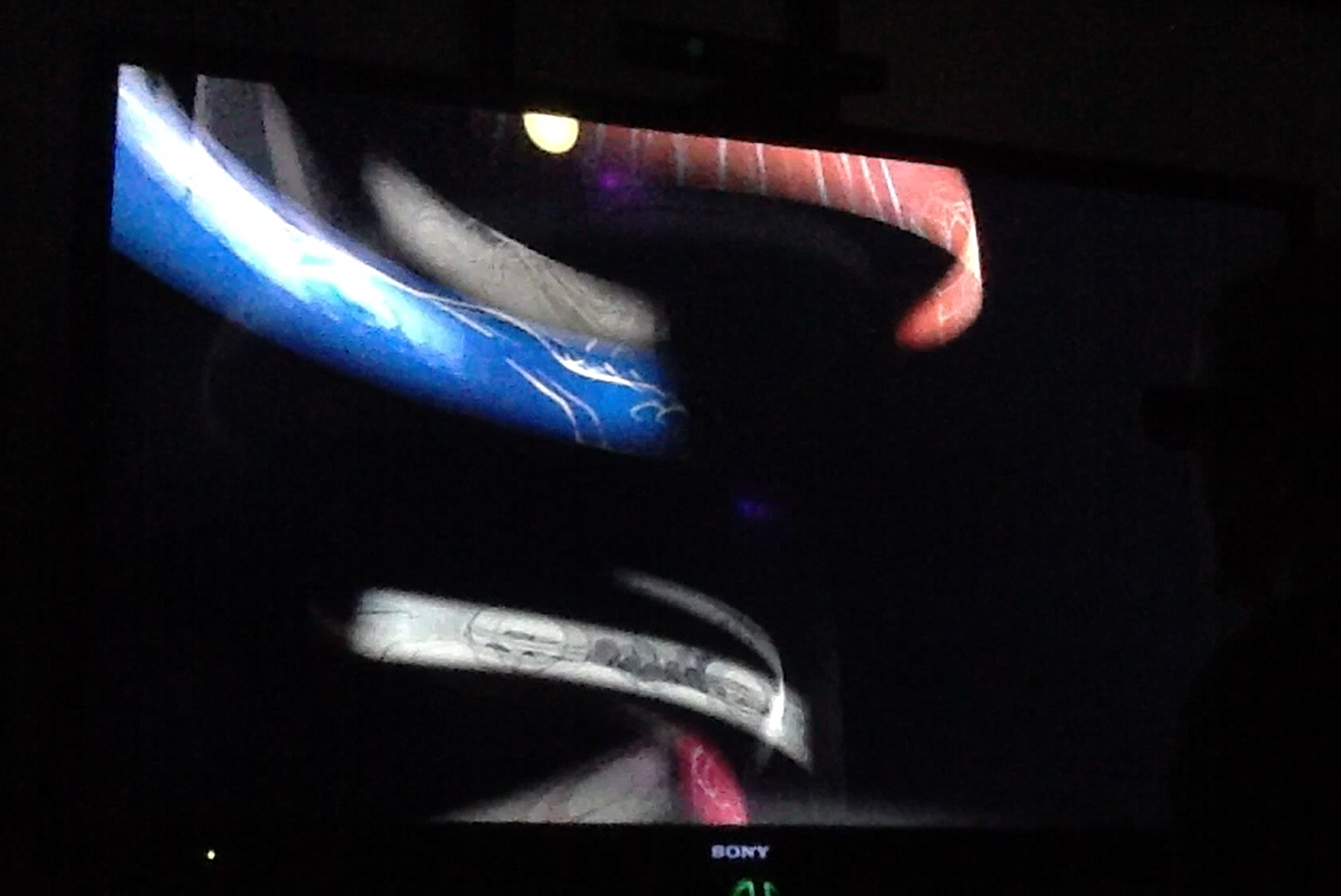“Dance Vortex: Work-in-Progress” presented by Tromble
Symposium:
Presentation Title:
- Dance Vortex: Work-in-Progress
Presenter(s):
Abstract:
The mixed-reality performance with the working title Dance Vortex: Creative Forces will use interactive 3-D projection with dance to convey the dynamic forces of difference in creative discovery. The audience will see colorful projections, fragments of story drawings arising from the floor and swirling in a vortex towards the sky. A lively, slightly ominous ambient soundscape establishes the emotional tone. When a dancer chooses a story-drawing with a game controller, the vortex recedes and a full projection of the drawing, which can be handled like an object by the dancer, appears as the spoken story emerges from the soundscape. The projected image, a physicalized memory, becomes the dancer’s partner in conveying entangled social and personal realities. As the passage concludes, the associated scenario fades out and the vortex arises again, giving another choice to the performers.
The content is based on true stories from researchers who challenge scientific “norms” in some way (age, background, gender, or ethnicity), the project emerged from a month-long dialogue during the first art and science session at the Djerassi Resident Artist Program. As I worked on Dream Vortex, a virtual interactive art installation based on the dreams of researchers, fellow resident and choreographer Donna Sternberg saw the experimental technology of the interactive vortex as an exciting movement environment. Simultaneously, we discussed creativity with my scientific collaborator Dawn Sumner, cognitive scientist Pireeni Sundaralingam and immunologist Devavani Chatterjea, whose stories of scientific discovery were entangled with memories of encountering social barriers in science. The “threshold” space of the vortex’s new 3-D technology offers new artistic means to convey such complex experiences.
Our work with the developing technology of interactive 3-D projections emphasizes a tangible “threshold” between physical and digital realities that has not been much explored. The unique spatial properties of the vortex, which oscillates between 2-D and 3-D, and is functionally both light and and an object, support an unusually integrated relationship between movement and environment.
Commercial 3-D experiences emphasize immersion through a “realist” esthetic and remain primarily visual. The research technology that we are adapting for art is not slick, and it includes movement. Therefore it has different expressive possibilities for imaging felt realities. The visual integration of opposites in the work, which integrates our oldest (charcoal marking) and newest (digital rendering) drawing technologies; 2-D and 3-D space; and weighty physical and weightless projected bodies, echoes this “humanist” emphasis.
The development of the precursor work, Dream Vortex, intersected with the rapid move of 3-D media towards mainstream availability. We experimented with moving the vortex onto the Oculus Rift 3-D viewer, which was technically successful but also let me see that interacting physical and projected bodies in real space had a sensual communication that was lacking in passive 3-D. This works-in-progress artist talk will be accompanied by a new demo video of the vortex with dancer scheduled for completion June, 2015 and will address the challenges and opportunities we have encountered marrying the technology with the content.





